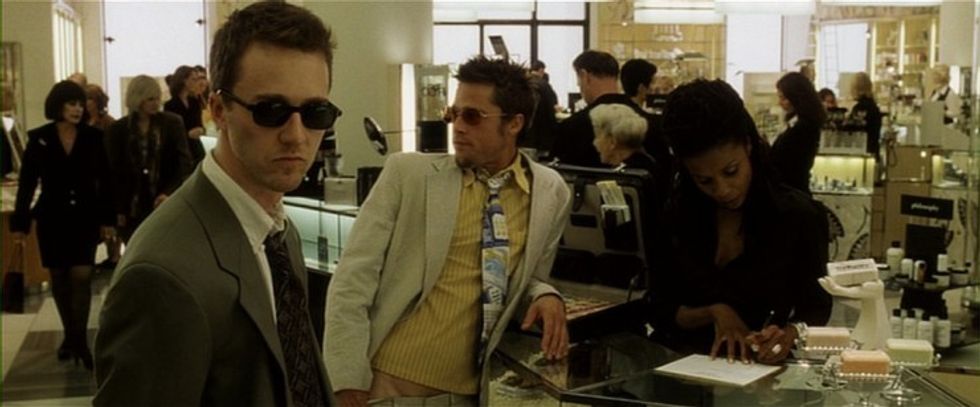The Iconically Precise Filmmaking of David Fincher
Let's explore the precise crafts of this filmmaker's particular style.

At its best, filmmaking is a precise craft in which every decision serves the purpose of your story. When it’s done right, an audience won’t notice all of the carefully thought-out minuscule details that go into just a single shot. Every element, from the delivery of a line to the color of a wall, should ideally be working in unison to communicate or evoke a feeling.
For this reason, a good director is not necessarily conversing with their department heads about the technical ways in which they are going to accomplish a certain task — at least at first. Rather, the first and most important conversation is about the feelings and emotions that they need to evoke within a scene. A precise and carefully thought out plan comes together from these discussions about character and story.
And if filmmaking is an art of the precise decisions made to evoke a feeling, then David Fincher is certainly one of the best in the game. His films have become iconic for their dark tones and styles. He is renowned for his attention to detail.
Take a look at a few of how Fincher’s dedication to detail has become his iconic filmmaking.
Shot Blocking and Composition
Fincher’s blocking and shot composition are both carefully crafted to communicate relationships and shifting dynamics within a scene.
In a scene between two love interests meeting for the first time, like the one in Gone Girl, Fincher might begin in a 50-50 shot, indicating an even playing field. As the push and pull of seduction take place, Fincher uses blocking and shot composition to indicate who is taking control of the interaction.
Fincher doesn’t cut to close-up unless he needs to. A closeup tells the audience that something is important. So from his point of view, you should be very cautious about when you choose to cut into a close-up. Withholding the closeup shot gives the moments that he does cut into it even greater power and meaning.
Another Fincher rarity is the use of handheld shots. Sometimes he’ll use handheld once in an entire film. Even when he does use it, he’ll design the scene around it, using it only for a specific character’s point of view in the scene.
Fincher doesn’t want his shots to feel like a person is operating the camera. He loves the idea of an omniscient camera that doesn’t have any personality to it. As he explains, this gives us a sense of “what’s happening was doomed to happen.”

One of the more unique elements of the visual language in Fincher’s films is his use of color. He uses it precisely, like any other element of his films, to tell us something about the characters or to evoke a certain feeling — usually discomfort.
While desaturation is often a guiding principle for Fincher, he uses pops of color or discordant colors to communicate meaning and emotion. These choices are never simply for aesthetic effect and always have story purposes.
For instance, in The Social Network, Fincher uses muted colors to match the murky moral compass of the film’s storyline.
Fincher often colors a location with a single hue. In Fight Club, he uses these hues to contrast the narrator’s corporate world with Tyler’s world. Fluorescent lights adjusted in the camera were used for the corporate scenes, to create an unnatural greenish tone, indicating an unfriendly work environment. On the other hand, the fight sequences are lit by much warmer practical sources to tell us that this is their comfort zone, despite the brutal fighting.

The Endless Amount of Takes
While most directors average fewer than ten takes, Fincher is known for the exorbitant amount of takes he does for a shot. Reportedly he averages around 25-65 takes, and has even gone as high as 100 takes once. This is a similar filming style that Stanley Kubrick had, which many creatives see as cruel and unusual punishment, but there is a method behind the madness.
The idea is to give an actor, and everyone, the space to try things and find the right moment, tightening even the smallest details. If a character is supposed to walk into their house and sit on a couch, when you do it 15 times it starts to look like they live there.

What are some other elements of Fincher’s style? Let us know in the comments.











